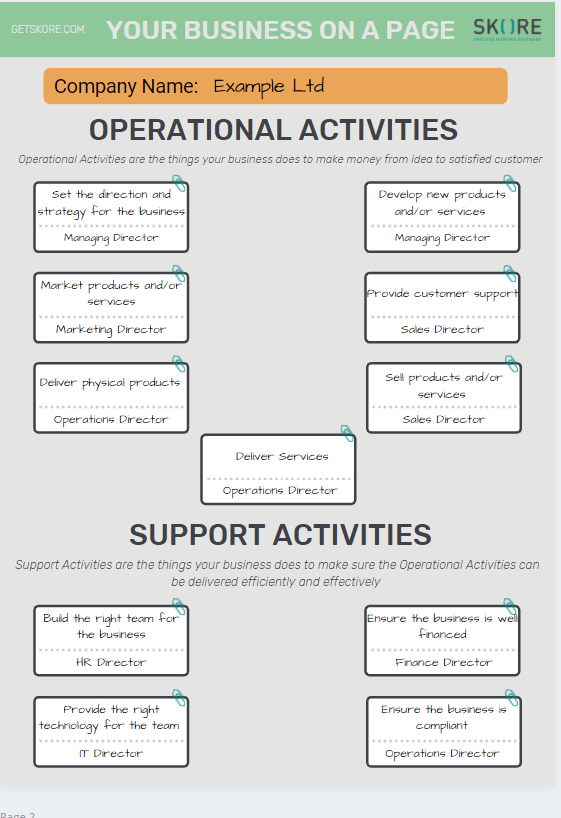Barriers to Growth: The Owners Control Dilemma – How to Delegate
Introduction
For a business owner, the daily challenges faced don’t get any easier. Maybe they are frustrated by a team not stepping up to take responsibility. Fed up with problem solving that they really don’t have time for. Or despairing of critical projects not delivered unless they are personally involved. Many business owners have ambitions to grow but are slowed down by these obstacles. The answer may be that they need to learn how to delegate.
Whether you are a business owner or advisor, many organisations experience these problems. In this blog we delve into some of the reasons why this happens and provide not only a few tips but also tangible tools to solve your delegation issues.
The problem
Like any thorny issue in a business setting there’s always more than one point of view. Either the owner doesn’t know how to delegate properly and is struggling with a lack of control or they feel they’ve hired the wrong people. The reality is that actually it often comes down to a lack of clarity between what the owner and the team think is expected of them.
Let’s look at this rationally, most employees want to do the right thing and follow direction. However, if they haven’t been presented with the correct boundaries or direction then how do they know what to do? As a business grows and leaders become busier they will delegate more tasks as needed. This haphazard approach however won’t work as tasks become bigger and more complex. If a business owner hasn’t figured out how to delegate by this stage then the team will lack authority in making the decisions they need to do.
How to delegate?
Learning how to delegate is easier said than done. Letting go of certain tasks is always going to be a struggle but first ensure there is clear direction and objectives for the business. It needn’t be complicated, owners should be able to describe their vision easily to everyone and have some measurables attached. A good example would be to double revenue every year by doing something better than all your competitors. Another might be to become the most trusted in your area among a certain demographic by a certain date. The clearer the business makes this, the easier it will be to measure progress and communicate to the team.
The next step is to think about how to organise or architect the business to achieve the objective. Consider what the major components are and how they fit together. This isnt as daunting as it first seems. Most components are standard across businesses and include things such as Marketing, Sales, Delivery, Production, Finance etc. If a business owner isn’t sure where to start then we recommend our free Business on a Page template which includes the most common areas. It’s a great place to start and effective in engaging team members, especially those that will be the next level of management.
Once the components are defined it’s time to note down who is responsible for each area. This is often when the truth dawns for many business owners. In our experience many of them find themselves responsible for most, if not all, of the components. In this case, the Business on a Page exercise has really served its purpose. Business leaders can now start asking themselves questions such as:
- Which of these areas they need to focus on to improve their new business objectives?
- Where are they spending too much time where others could help?
- Who has the best skills and experience to own the different components?
- How does work in one component flow to the next?
As a result of this exercise, owners are not just asking staff to do things in different areas. They are giving them the responsibility to decide how things get done. This is a great first step but for many relinquishing that control doesn’t always happen that easily. Learning how to delegate takes a mind shift as well as practical application.

What if they don’t do it the right way? Or the way you want them to do it?
Business owners should be encouraged by being reminded of the original objectives for the business. Remember to measure objectives for each component to ensure that it is delivering in ways an owner would expect. If team members deliver on the measures defined by the leader, does the leader really need to be involved in the detail?
As a countermeasure we would always suggest that business owners have a view of what is working well in each area and where each member needs help. The best way to achieve this is to ask each member of the team to map out their own high level business processes. This not only clarifies the way they do things but also ensures that everyone in the team can see how they fit in with each other. It brings engagement and collaboration to the organisation, a win win for any business.
This combination of the Business on a Page, the measures and high level processes is the architecture of a business and they can use it at regular status meetings. It becomes a common language where the team can clearly articulate problems they face and makes it easier for owners to help them.

How the Business on a Page works.
If you’d like an online version of the Business On A Page Template, you can take a look at how it works here.
The Business on a Page template is a blank template that provides some of the most common activities commonly found across different businesses. Use those provided or specify your own components relevant to your business. The examples are exactly that, examples to help you find the right wording for individual activities.
There are two types of activities on the template, those that describe the work done to make money, such as marketing and sales. Then the activities that support these such as Finance, HR and IT.
There’s no limit to how many boxes are available but try to keep them all on one page. Its interesting to also fill in the template for how the business looks today and then create another one for where the business will be in the future. This helps when trying to prioritise what to do next.
With the boxes defined, add the owners to each box. As mentioned above it’s better to do this with the team and encourage them to suggest which boxes they own, or think they should own.
Once the owners for each box are agreed, discuss how each will be measured and write this alongside each box. Remember that it’s unlikely you’ll get it exactly right on the first try. Revisit and tweak this over several weeks but in the meantime the whole team has a common framework in which to discuss the business, any problems and how to overcome them.
Finally, the team needs to start looking at processes. Check out our process mapping guide here as a good place to start. If you want to capture your processes and share them digitally, along with the business on a page then of course we highly recommend Skore, our process improvement platform that’s designed to be easy to use by everyone in the business.
Skore is the process improvement platform designed to be used by everyone in your business. Map processes, gain insights instantly and share with everyone. Craig Willis is the CEO and Co-Founder of Skore.
